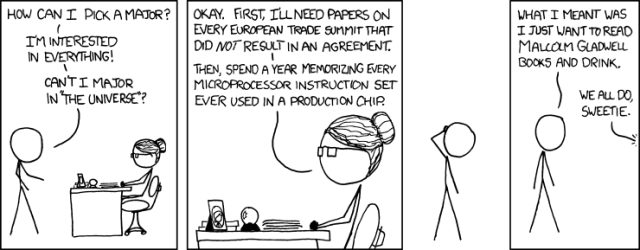Science and Art: strange bedfellows?
You will probably have noticed a giant rift that runs through all of Warwick University. And no, I don’t mean the Somme-like trenches currently all around the Arts Centre. In fact, this deep abyss, this greatest of walls runs through wherever those bitterest of enemies, the Science and the Arts, come into contact. From things like “Physicists have the emotional range of a teaspoon” to “At least we can get jobs when we graduate”, we have all heard and probably said similar things, regardless of which side of the battle you are on.
In 1959, the British chemist and novelist C. P. Snow was the guest lecturer of that year’s Rede Lecture at the University of Cambridge. His lecture was titled ‘The Two Cultures’ and it argued that “the intellectual life of the whole of western society is increasingly being split into two polar groups”. And while some parts of his argument were laughable (accusing the “literary intellectuals” of being “natural Luddites”), his main point still stands.
This false dichotomy is a more recent phenomenon than many might think. Renaissance ideals held the polymath, master of all trades jack of none, with the highest regard. What better example than Leonardo da Vinci: Artist, anatomist, engineer, inventor, scientist. There is no doubt that the world was much simpler back then and the price for the explosion of knowledge since the Industrial Revolution is specialisation. The polymath has been redefined as someone able to contribute to two or three subfields at most.
I don’t believe that was the catalyst for the rift we currently see. No one has to be a leading expert in order to appreciate or have an interest in anything, be it Picasso or astronomy. And yet at some point the notion that scientific thought is purely cold and rational, and diametrically opposed to the creative, artistic mind became dogma.
Richard Feynman, perhaps the greatest physicist since Einstein, has a famous anecdote in which a friend of his shows him a flower. “I as an artist can see how beautiful this is but you as a scientist take this all apart and it becomes a dull thing”, he says. Feynman replies “I can appreciate the beauty of a flower. At the same time, I see much more (…) imagine the cells in there, the complicated actions inside, which also have a beauty. All kinds of interesting questions which the science knowledge only adds to the excitement, the mystery and the awe of a flower. It only adds. I don’t understand how it subtracts.”
The way science education works nowadays is much to blame. Too much emphasis on rote-learning often hides away the beauty in Science and Maths for those who do not stick with it until this realisation comes on its own but also leaves the humanities to be seen as vain and useless.We all lose from the problems this mentality causes. A lack of understanding of what science is all about by the general public leads to climate change deniers, anti-vaxxers and the politicians who lack the tools to understand and make the right decisions.
Scientists also lose much by ignoring the other side. Science isn’t just plowing through equations or a list of lab instructions, the best scientists in history had a sort of artistic creativity to them.
Science may have split from Philosophy a few centuries ago but it didn’t take away all the important questions with it. At a time when so much research, from climate change to genetics to artificial intelligence, has important moral implications attached to it, the questions that the Humanities pose cannot be ignored.

Comments